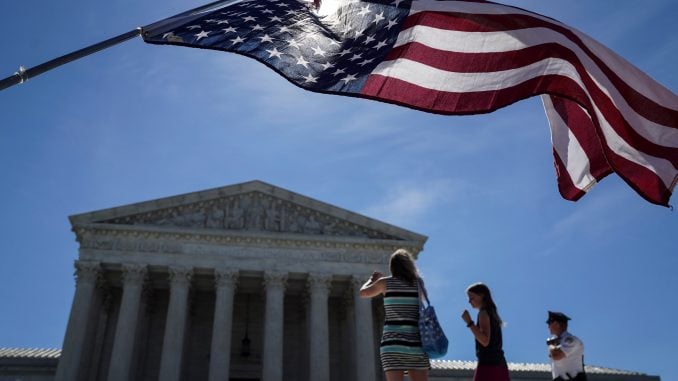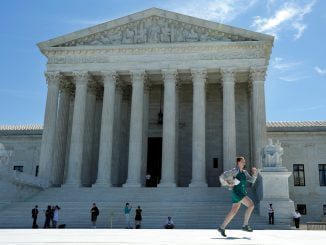
WASHINGTON, D.C. — The U.S. Supreme Court threw out a lower court’s ruling that North Carolina Republican lawmakers drew congressional district boundaries to ensure lopsided electoral victories for their party against rival Democrats.
The justices sent the case back to a federal three-judge panel to reconsider whether the plaintiffs, including a group of Democratic voters, have the necessary legal standing to sue in the case involving a contentious practice called partisan gerrymandering.
The Supreme Court put on hold the lower court’s order that a new map be drawn with conservative Justice Samuel Alito saying the lower court had “committed a fundamental legal error” in analyzing the dispute. The ruling leaves the Republican-drawn districts in place for congressional elections in November, giving a boost to Republicans in their bid to maintain control of the U.S. House of Representatives.
The three-judge panel in Greensboro ruled unanimously in January that the Republican-drawn map of N.C.’s 13 U.S. House districts violated the constitutional guarantee of equal protection under the law. Two of the judges found it also ran afoul of the Constitution by discriminating based on political belief and association.
The high court on June 18 declined to issue a major ruling in two high-profile cases from Wisconsin and Maryland that could have curbed the ability of state lawmakers to draw electoral districts purely for partisan advantage.
Election reformers in both parties had hoped the Supreme Court would use the Wisconsin and Maryland cases to crack down on partisan gerrymandering, but it decided both on narrow and procedural grounds.
Chief Justice John Roberts indicated a more comprehensive ruling could come in a future case.
With partisan gerrymandering, the political party that controls a state legislature uses the process of redrawing electoral districts after the U.S. census every decade to tighten its grip on power by diluting the influence of voters who tend to back the rival party.
Democrats have accused Republicans of intensifying partisan gerrymandering this decade, helping President Donald Trump’s party maintain control of the U.S. House of Representatives and state legislatures. However, both parties have engaged in gerrymandering over the years, and the Maryland case decided by the justices involved a congressional district drawn by Democrats.
Challengers to electoral maps say gerrymandering is becoming ever more extreme through the use of precise voter data and computerized modeling used to devise maps that dilute the clout of voters who tend to favor the party not in power. Critics in both parties’ gerrymandering have said that it warps democracy by stifling large segments of the electorate.
The North Carolina dispute centered on a congressional redistricting plan adopted by the Republican-led legislature in 2016, which was preapproved by the Obama administration. But a court ruled that Republican lawmakers improperly used race as a factor when redrawing certain U.S. House districts after the 2010 census.
North Carolina’s new congressional map was challenged in two lawsuits by more than two dozen Democratic groups, including the North Carolina Democratic Party.
The plaintiffs told the justices that if they did not take action against partisan gerrymandering “the shocking facts of this case will become the new normal.”
The justices also ruled in a similar Texas case on Monday, upholding three of four congressional districts, despite plaintiff’s claims that they are discriminatory. The court struck down the fourth district.
“The common thread in the court’s gerrymandering decisions this term has been to generally make it harder for plaintiffs to bring these claims,” said legal analyst and University of Texas Law School professor Steve Vladeck, “and to generally allow states more flexibility and deference in drawing congressional and state district lines.”
The North Carolina case could make its way back to the Supreme Court within months if the lower court decides that the plaintiffs are still entitled to sue.



